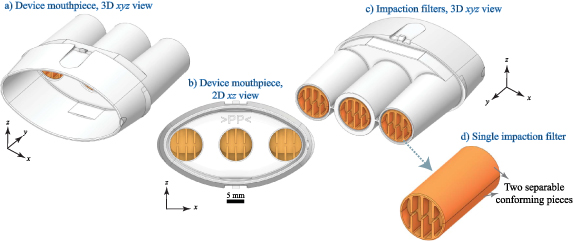最近の使用と過去の使用を区別することは、依然として捉えどころのない目標である。 Distinguishing between recent use and past use remains an elusive goal.
2023-05-22 米国国立標準技術研究所(NIST)
◆国立標準技術研究所とコロラド大学は研究を行い、ブレスサンプルからTHCを測定する方法を開発し始めた。研究は進行中であり、さらなる研究と結果の検証が必要とされている。
<関連情報>
- https://www.nist.gov/news-events/news/2023/05/researchers-analyze-thc-breath-cannabis-smokers
- https://iopscience.iop.org/article/10.1088/1752-7163/acd410
合法製品の吸入前後にインパクションフィルター装置で採取した呼気エアロゾル中のTHC-パイロットスタディ THC in breath aerosols collected with an impaction filter device before and after legal-market product inhalation—a pilot study
Kavita M Jeerage, Cheryle N Beuning, Adam J Friss, L Cinnamon Bidwell and Tara M Lovestead
Journal of Breath Research Published 22 May 2023
DOI:10.1088/1752-7163/acd410

Abstract
An accurate cannabis breathalyzer based on quantitation of the psychoactive cannabinoid Δ9-tetrahydrocannabinol (THC) could be an important tool for deterring impaired driving. Such a device does not exist. Simply translating what is known about alcohol breathalyzers is insufficient because ethanol is detected as a vapor. THC has extremely low volatility and is hypothesized to be carried in breath by aerosol particles formed from lung surfactant. Exhaled breath aerosols can be recovered from electrostatic filter devices, but consistent quantitative results across multiple studies have not been demonstrated. We used a simple-to-use impaction filter device to collect breath aerosols from participants before and after they smoked a legal market cannabis flower containing ∼25% Δ9-tetrahydrocannabinolic acid. Breath collection occurred at an intake session (baseline-intake) and four weeks later in a federally-compliant mobile laboratory 15 min before (baseline-experimental) and 1 h after cannabis use (post-use). Cannabis use was in the participant’s residence. Participants were asked to follow a breathing maneuver designed to increase aerosol production. Breath extracts were analyzed by liquid chromatography with tandem mass spectrometry with multiple reaction monitoring of two transitions for analytes and their deuterated internal standards. Over more than 1 yr, 42 breath samples from 18 participants were collected and analyzed in six batches. THC was quantified in 31% of baseline-intake, 36% of baseline-experimental, and 80% of 1 h post-use breath extracts. The quantities observed 1 h post-use are compared to those reported in six other pilot studies that sampled breath at known intervals following cannabis use and are discussed with respect to participant characteristics and breath sampling protocols. Larger studies with verified abstinence and more post-use timepoints are necessary to generate statistically significant data to develop meaningful cannabis breathalyzer technology.


